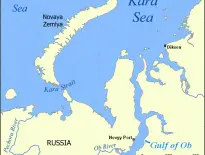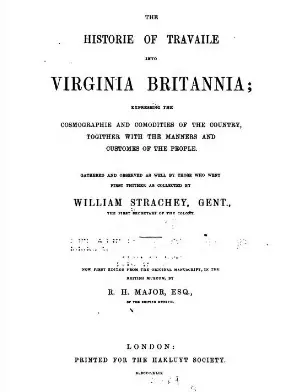 On this day in history, 31st May 1577, Sir Martin Frobisher set sail with his fleet from Harwich, England, to Frobisher Bay, Canada. By 31st August 1578, Frobisher and his men had mined 1370 tons of ore, which was loaded onto the ships to take back to England. Unfortunately, no gold or other precious metal was found in the ore.
On this day in history, 31st May 1577, Sir Martin Frobisher set sail with his fleet from Harwich, England, to Frobisher Bay, Canada. By 31st August 1578, Frobisher and his men had mined 1370 tons of ore, which was loaded onto the ships to take back to England. Unfortunately, no gold or other precious metal was found in the ore.
But who was Sir Martin Frobisher?
Sir Martin Frobisher was a privateer, explorer and naval commander who was born around 1535. He was born in Altofts, near Normanton, West Yorkshire, and was the son of Bernard Frobisher and Margaret Yorke. After his mother's death he was sent to live with Sir John Yorke, a relative of his mother's, in London. Yorke was a merchant adventurer.
Frobisher took part in a voyage to Guinea in 1553 which Yorke had invested in and which was led by Thomas Wyndham. He acted as assistant to John Beryn, Yorke's factor. A fever wiped out over two-thirds of the crew, including Wyndham, but Beryn and Frobisher survived. In 1554, Frobisher took part in a voyage to Guinea led by John Lok and ended up being taken into custody by the Portuguese and being held by them for 2-3 years.
In 1559, Frobisher commanded a voyage to Barbary and following that he became a privateer. He was imprisoned in 1563 in Launceston gaol after being involved, with his brother John, in the capture of the "Katherine", a Spanish ship, but was released in 1564. In 1565, the brothers set off on board the "May Flower" bound for Guinea to trade, but were apprehended on suspicion of piracy and imprisoned. Frobisher was free by October 1566 when Cardinal Châtillon issued him with letters of reprisal, i.e. a licence to attack and capture enemy vessels, to attack French Catholic ships supported by the Guises. Unfortunately, Frobisher didn't just attack these ships and so was arrested in the summer of 1569 and imprisoned, first at Fleet and then in Marshalsea. He was released following the intervention of Lord Admiral Edward Fiennes de Clinton and William Cecil.
What Frobisher is known for is his three voyages to the New World in search of the Northwest Passage. In 1574, Frobisher and Michael Lok, a merchant adventurer and the London agent of the Russia Company, set about planning a voyage to find the "Strait of Anian", a northwest passage to the Far East, known as Cathay. They set out on 12th June 1576, with Frobisher as commander, after getting the necessary patent from the Russia Company and backing from members of Elizabeth I's privy council, like Ambrose Dudley, Earl of Warwick. Their party consisted of the "Gabriel" and "Michael", 2 small barks, and a 7 ton pinnace. They lost the pinnace in a storm in the Davis Strait, which lies between mid-western Greenland and Canada's Baffin Island, and the "Michael" was forced to turn back, but Frobisher carried on in the "Gabriel" until a falling out with some Inuits, and the abduction of five Englishmen by the Inuits, combined with bad weather forced Frobisher to return home to England.
Frobisher's second voyage left England on 31st May 1577. Along with the "Gabriel" and Michael", Frobisher had the "Ayde", a former Royal Navy ship provided by Queen Elizabeth I, and 150 men. This time, the aim was not to find the passage but, instead, to find ore. Christopher Hall, master of the "Gabriel", had found some black ore on what became known as Little Hall's Island on the last voyage and so the plan was to mine for. Nothing was found when the part inspected Little Hall's Island but 160 tons were mined from what became known as the Countess of Warwick Mine, on Kodlunarn Island, in Frobisher Bay. They then returned to England.
The hope of finding gold and the need to set up a colony led to a third voyage leaving on 3rd June 1578. This time, Frobisher had a fleet of fifteen ships. The party landed briefly at "Friesland", the southern tip of Greenland, before heading on to the Countess of Warwick Island. What should have been a short journey took four weeks, due to storms, fog and icebergs, and Frobisher's Oxford DNB biographer, James McDermott, notes that it was during this treacherous journey that "elements of Frobisher's fleet became the first English ships to enter what is now Hudson Strait". They finally made it to the island and were able to mine 1370 tons of ore to take back to England. Unfortunately, nothing of value was found in the ore and the colony failed. The enterprise, with all its debts, ground to a halt and Frobisher fell from favour.
Frobisher did nothing of note until 1585 when, having managed to get back in royal favour, he was appointed as vice-admiral to Sir Francis Drake for his raiding of Spanish ports and ships in the West Indies. In 1587, he was the commander of a small fleet in the English channel and in April 1588, having been deemed to be one of "those which I think the world doth judge to be men of greatest experience that this realm hath" by Lord Admiral Howard, he was given command of the "Triumph", one of Elizabeth I's navy's four "great ships" against the Spanish Armada. James McDermott writes:
"At dawn on 23 July the Triumph and five armed merchantmen were separated from the rest of the English fleet off Portland Bill. Frobisher appears to have intended this. Attacked by the four galliasses of the Armada (probably the best-armed Spanish ships, and highly manoeuvrable in the calm waters of that morning) he conducted a master class in close-in fighting—supposedly the galliasses' forte—which had them fighting in turn for their own survival. Eventually ‘rescued’ by other English ships, Frobisher had in fact achieved the first tactical victory over vessels of the Armada since Drake's seizure of the Rosario two nights earlier."
The following day, Lord Admiral Howard chose Frobisher as one of four commanders of the English fleet which had been divided into four squadrons. Frobisher attempted an attack on the "San Martin", the Spanish flagship. Things looked back when a change in wind direction led to the "Triumph" and two other English ships being isolated and then attacked by the Spanish fleet, but another change in the wind and the skills of the English sailors led to them safely returning to the rest of the squadron. Frobisher was knighted the next day on the "Ark Royal", the English flagship. The "Triumph" was also involved in the Battle of Gravelines on 29th July.
Frobisher's service in Elizabeth I's navy meant that he became one of the queen's most trusted officers. Later campaigns and voyages included command of squadrons in the Atlantic, with the aim of intercepting and disrupting Spanish trade, and command of the fleet that took Sir John Norreys and the English army to Brittany in 1594. Frobisher was injured in hand-to-hand combat on 7th November 1594 when he led a force against the fortress's main gate at the Siege of Fort Crozon. The injury he sustained was a pistol wound to the thigh. On 22nd November 1594, shortly after the English fleet landed at Plymouth, Frobisher died of gangrene. His entrails were buried at St Andrew's Church, Plymouth, and his body was taken back to London and buried at St Giles-without-Cripplegate.
Trivia: Frobisher Bay in Nunavut, Canada, is named after him.
Notes and Sources
- McDermott, James. “Frobisher, Sir Martin (1535?–1594).” James McDermott In Oxford Dictionary of National Biography, edited by H. C. G. Matthew and Brian Harrison. Oxford: OUP, 2004. Online ed., edited by David Cannadine, May 2015.



Leave a Reply